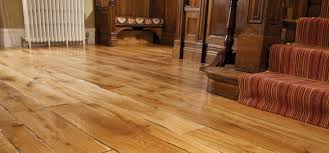Wychwood Blog
Expert fitting tips

Wood flooring
Wooden flooring when fitted professionally can give a room that wow factor. Fitted badly it just becomes an eye sore.
At Wychwood we have replaced many badly fitted floors, because our customers have found laying flooring too difficult and given up, or have not been unhappy with the end result.
You want a good finish in rooms which get seen by other people, and to get a professional finish and wow factor means buying the best materials you can afford and using a professional, like ourselves, to fit the flooring.
If you are fitting flooring yourself and want a successful outcome we would recommend you take note of the following points:
- Have realistic expectations. Cheap materials will never create an expensive finish. Someone with little or no experience will not be able to achieve a professional finish.
- As with all DIY, preparation is everything. Make sure the sub-floor is well prepared.
- Read the instructions a couple of times before you start.
- Have the correct tools.
- Don't rush to get finished.
The right tools for the job
When fitting floors yourself you will need a tape measure, carpenter's square and pencil for marking boards.
A handsaw will be needed to trim lengths and a jigsaw is great for cutting along the length of a plank which is to be fitted along side walls. To avoid damaging the face of the board choose a jigsaw that cuts on the down stroke.
You will also need a hacksaw and spade drill bit for making gaps for radiator pipes to fit into and a coping saw for more intricate shapes.
Wood flooring should always be fitted under the architrave to get a great finish. To do this you'll need a flat saw. (architrave - wooden frame around doors).
When you purchase your flooring ask the retailer for a laminate kit, which will include basic tools such as a pull bar, wedges and tapping block.
Mistakes to avoid
These are the mistakes we often see committed by non-professional floor fitters, which are easy to avoid:
- Boards have not been staggered.
- Beading that has been cut badly to create unattractive gaps rather than a neat return.
- Badly cut boards around radiator pipes.
- Floors cut to fit around an architrave.
- Gaps between boards because of a lack of glue, or tongue and groove boards were not held together overnight while the glue was setting.
- Movement in the board because of a small void underneath a board, caused by an uneven sub-floor.
- Creaking floors caused when loose floorboards in the sub-floor haven't been fixed before laying the new one on top.
- No expansion gap causing the flooring to bow.
Other things that can go wrong
- Laminated flooring can come apart if it has been laid on an uneven floor.
- Edges of the boards can stick up (tenting) when moisture has gotten in, causing the edges to swell. This means the picture can wear off over time.
- Lake of adequate expansion gap causing buckling across flooring.
Comments are switched off for this blog.